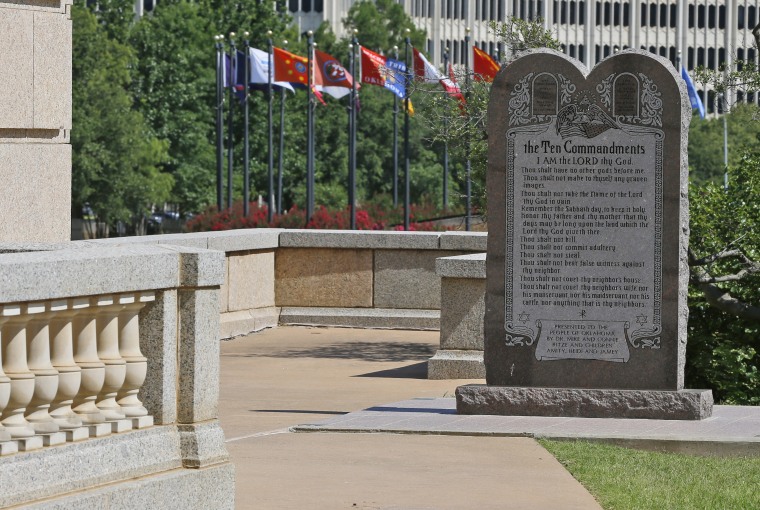It's been about a month since the Oklahoma Supreme Court ruled that a state-sponsored Ten Commandments monument on the Capitol grounds violates the state Constitution. As regular readers know, it wasn't a close call -- the justices ruled 7-2 that the six-foot-high, stone Christian display is at odds with the law that requires state government to be neutral on matters of religion.
The state Attorney General's office responded by filing an appeal ... to the Oklahoma Supreme Court. If that sounds odd, there's a good reason -- Oklahoma Attorney General Scott Pruitt effectively told the justices, "I know you just ruled on this, but I want you to take another look at it."
As the Oklahoman reported late yesterday, this didn't turn out well for state officials.
The Oklahoma Supreme Court has rejected a last ditch attempt by the state to keep a Ten Commandments monument next to the Oklahoma Capitol. Monday, the court turned down a request from the state to reconsider its June 30 ruling calling for removal of the 6-foot granite statue. This sets the stage for it to be taken down within a few weeks, said Brady Henderson, legal director for ACLU Oklahoma, which filed the lawsuit.
So far, so good. Section II-5 of the Oklahoma Constitution says public funds or property can't be used to benefit or support any "sect, church, denomination, or system of religion," either directly or indirectly. There's no real wiggle room here. Republican lawmakers have threatened to impeach the justices upholding the state Constitution, but the state Supreme Court saw no reason to back down.
The tricky part is what happens next, because it's not altogether clear officials are prepared to follow the law.
Remember, immediately after the state court ruled, Gov. Mary Fallin (R) said she would leave the religious monument in place, regardless of the court's decision, while Oklahoma policymakers explored alternatives.
"Oklahoma is a state where we respect the rule of law, and we will not ignore the state courts or their decisions," Fallin's statement said. "However, we are also a state with three co-equal branches of government."
It's never a good sign when a politician says "we respect the rule of law," and then adds the word "however."
Looking ahead, the state Supreme Court has ordered the removal of the state-endorsed Christian monument, and that order will now go to a lower court to begin the formal removal process. There's been considerable chatter among GOP lawmakers about changing the state Constitution, which may yet happen, but which can't happen quickly enough to rescue this particular government religious display.
Those involved in the case hope Oklahoma officials will honor the state Supreme Court's ruling, but no one seems absolutely certain of it.
